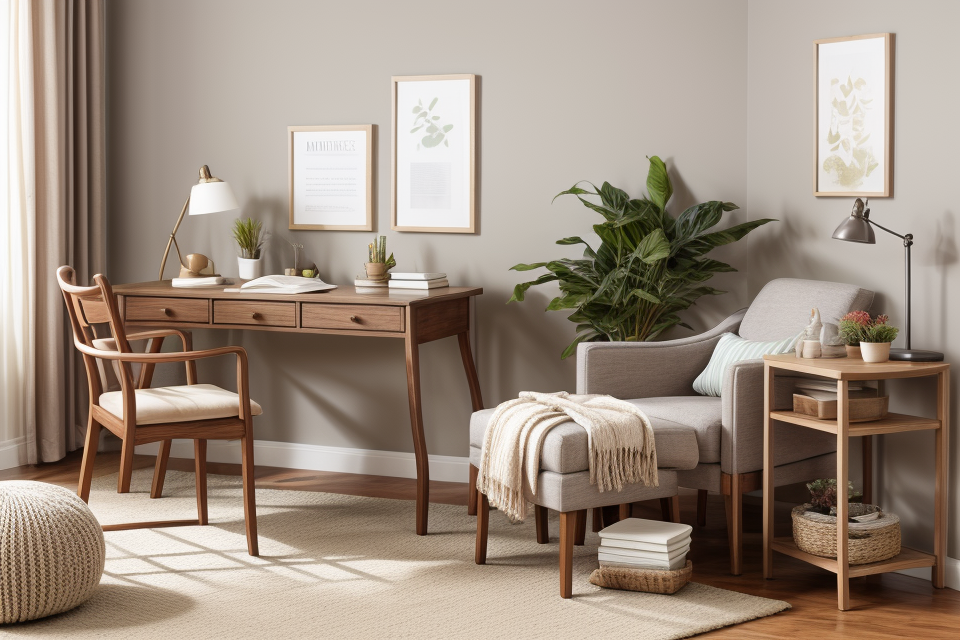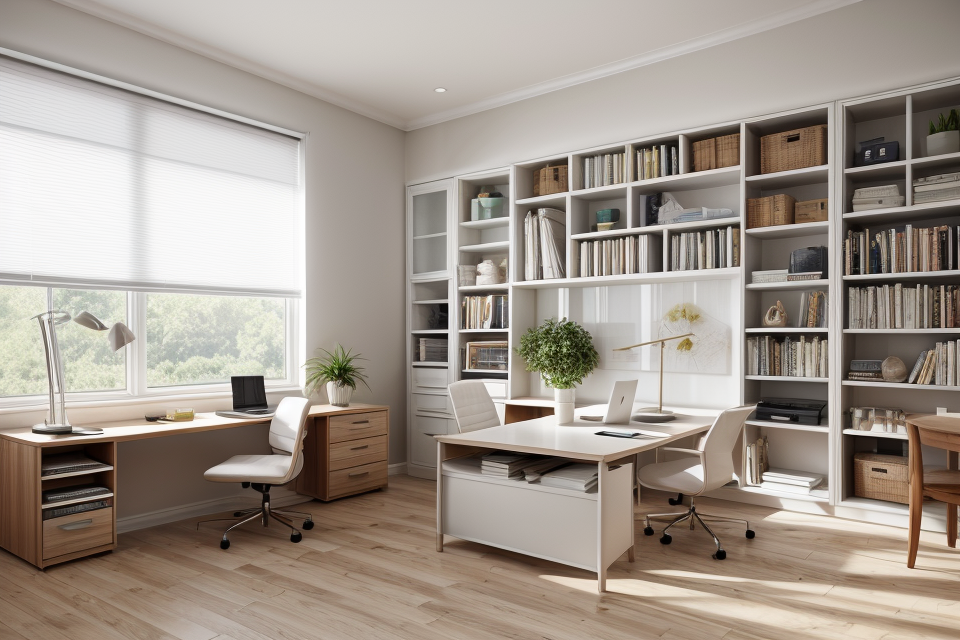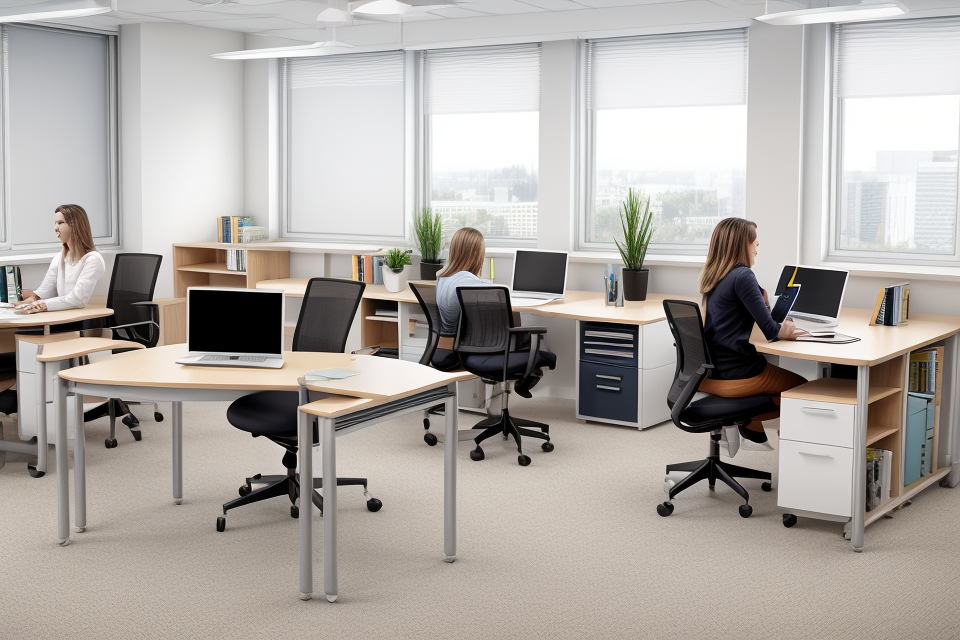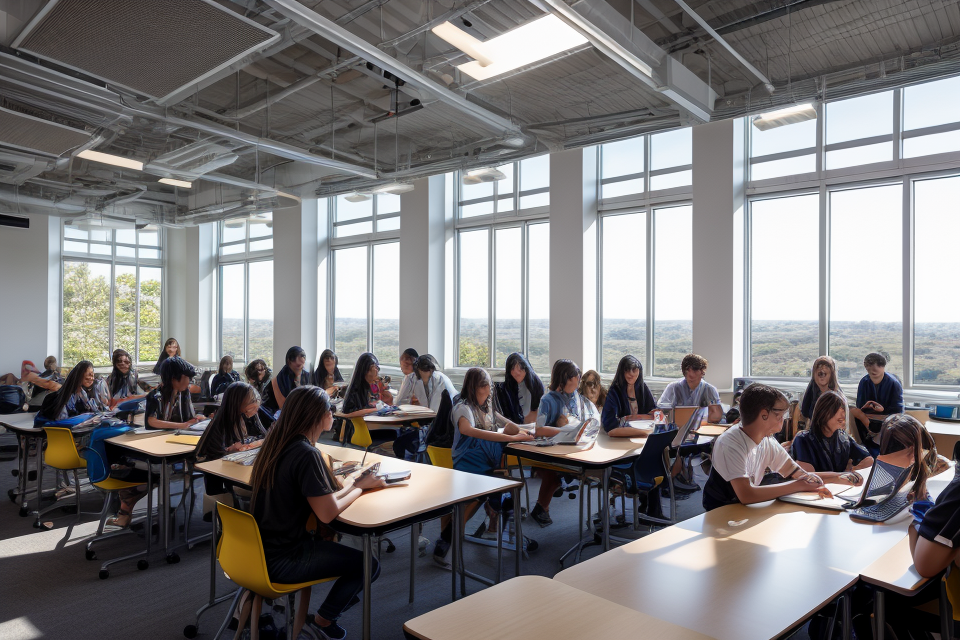
Creating the perfect study environment is essential for maximizing learning opportunities. It is not just about having a quiet space, but also about creating an atmosphere that is conducive to learning. The environment where learning takes place plays a crucial role in shaping the learning experience. In this article, we will explore the different factors that contribute to creating the perfect study environment. We will discuss the importance of creating a distraction-free zone, managing lighting and temperature, and incorporating technology to enhance the learning experience. By understanding these factors, you can create an environment that promotes focused and effective learning, leading to greater academic success. So, let’s dive in and discover how to create the perfect study environment.
Understanding the Importance of a Suitable Study Environment
Factors Affecting Learning
Physical environment
The physical environment in which one studies can greatly impact their ability to learn. Factors such as lighting, temperature, and noise levels can all have an effect on a student’s ability to concentrate and retain information. For example, studies have shown that natural light can improve mood and productivity, while excessive noise can lead to distractions and decreased retention. Therefore, it is important to consider the physical environment when creating the perfect study space.
Psychological factors
In addition to the physical environment, psychological factors can also play a role in a student’s ability to learn. Factors such as stress, anxiety, and motivation can all impact a student’s ability to focus and retain information. For example, students who are feeling stressed or anxious may have difficulty concentrating and retaining information. Therefore, it is important to consider the psychological factors when creating the perfect study environment.
Distractions and interruptions
Distractions and interruptions can also have a significant impact on a student’s ability to learn. Distractions such as social media, television, and phone notifications can all take away from a student’s ability to focus and retain information. Interruptions such as phone calls or unexpected visitors can also disrupt a student’s learning process. Therefore, it is important to minimize distractions and interruptions when creating the perfect study environment.
Benefits of an Optimal Study Environment
Having an optimal study environment can provide numerous benefits for students. These benefits can have a significant impact on a student’s academic performance and overall learning experience. Some of the key benefits of an optimal study environment include:
- Improved focus and concentration: A well-designed study environment can help students stay focused and concentrated during their study sessions. This can help students to absorb and retain information more effectively, which can lead to better academic performance.
- Enhanced motivation and productivity: A study environment that is conducive to learning can also help to boost motivation and productivity. When students are in a comfortable and stimulating environment, they are more likely to feel energized and engaged, which can lead to more productive study sessions.
- Better memory retention and recall: Research has shown that an optimal study environment can also improve memory retention and recall. This is because the brain is better able to process and store information when it is presented in a conducive environment. For example, studying in a quiet and well-lit room can help the brain to better process and retain information.
Overall, having an optimal study environment can have a significant impact on a student’s academic performance and overall learning experience. By creating a study environment that is conducive to learning, students can improve their focus, motivation, and memory retention, which can lead to better academic performance.
Designing Your Ideal Study Space
Assessing Your Current Study Environment
Evaluating the Physical Space
Before embarking on creating the perfect study environment, it is essential to evaluate the physical space where you currently study. This involves considering the size, layout, and furniture arrangement of the room. The space should be comfortable, well-lit, and free from any hazards that could hinder your learning experience. It is also important to ensure that the space is conducive to concentration and focus, with minimal distractions that could disrupt your study session.
Identifying Potential Distractions
In addition to evaluating the physical space, it is also important to identify potential distractions that could interfere with your learning process. This includes things like noise, temperature, and even the presence of other people. Identifying these distractions will help you take proactive steps to minimize them, such as choosing a quiet study spot or wearing noise-cancelling headphones. By eliminating distractions, you can create an environment that is conducive to learning and productivity.
Determining the Time and Location
Finally, it is important to determine the best time and location for your study sessions. Some people find that they are most productive in the morning, while others prefer to study in the evening. Similarly, some people prefer to study in a quiet, isolated location, while others prefer a more lively environment. Experiment with different times and locations to find what works best for you, and create a study schedule that maximizes your learning opportunities.
By evaluating your current study environment, you can identify areas for improvement and take proactive steps to create an environment that is conducive to learning and productivity. This will help you maximize your learning opportunities and achieve your academic goals.
Creating a Comfortable and Productive Space
When designing your ideal study space, it is important to create a comfortable and productive environment that promotes learning and concentration. Here are some tips to help you achieve this:
- Optimizing lighting and temperature:
- Lighting: Ensure that the room has adequate lighting that is neither too bright nor too dim. Natural light is usually the best option, but you can also use desk lamps or floor lamps to supplement the lighting. Avoid using harsh overhead lights as they can cause glare and eye strain.
- Temperature: Maintain a comfortable temperature in the room. Studies have shown that the ideal temperature for studying is between 60-68 degrees Fahrenheit. Keep in mind that some people may find the room too cold or too warm, so it’s important to adjust the temperature according to individual preferences.
- Choosing the right furniture and equipment:
- Furniture: Choose furniture that is comfortable and supportive. A good chair with good back support can make a big difference in your ability to focus and stay comfortable for long periods of time. The chair should also be adjustable so that you can change the height and angle of the seat and backrest.
- Equipment: Invest in good quality equipment such as a computer, printer, and scanner. Ensure that the equipment is in good working condition and that all the necessary software and updates are installed. You may also want to consider investing in a good quality mouse and keyboard to improve efficiency and reduce hand and wrist strain.
- Minimizing distractions and interruptions:
- Eliminate noise: If possible, choose a study space that is away from noisy areas such as the kitchen or living room. If you cannot avoid noise completely, consider using noise-cancelling headphones to block out distracting sounds.
- Avoid distractions: Remove any unnecessary items from your study space, such as phones, tablets, and other electronic devices. These items can be a major distraction and can hinder your ability to focus.
- Manage interruptions: If you live with others, try to schedule your study time when others are not using the same space. If you cannot avoid interruptions, communicate with those around you and ask them to respect your study time.
Balancing Comfort and Functionality
When it comes to creating the perfect study environment, it’s important to strike a balance between comfort and functionality. A comfortable study space can help reduce stress and increase focus, while a functional space can help you make the most of your learning opportunities. Here are some tips for balancing comfort and functionality in your study space:
- Personalizing your study space: Personalizing your study space can help make it more comfortable and conducive to learning. This can include adding personal touches like photographs, artwork, or comfortable furniture. Personalizing your space can also help you feel more connected to your learning environment and more motivated to study.
- Incorporating technology and resources: Incorporating technology and resources into your study space can help make it more functional and efficient. This can include setting up a dedicated computer or laptop workstation, organizing your notes and study materials, or using apps and software to help you study more effectively. Incorporating technology and resources can also help you make the most of your learning opportunities by allowing you to access a wide range of educational resources and tools.
- Ensuring accessibility and convenience: Ensuring accessibility and convenience in your study space can help make it more functional and efficient. This can include ensuring that your study space is well-lit, well-ventilated, and free from distractions. It can also include ensuring that you have easy access to the resources you need, such as textbooks, notes, or study guides. Ensuring accessibility and convenience can help you make the most of your learning opportunities by allowing you to focus on your studies without having to worry about accessibility or convenience issues.
Developing Effective Study Habits
Setting Goals and Priorities
Establishing realistic objectives is a crucial component of effective study habits. This involves setting achievable goals that align with your overall academic or professional objectives. To set realistic goals, it is important to assess your current skill level, identify areas for improvement, and consider any external factors that may impact your study time, such as work or family commitments.
Once you have established your goals, it is important to allocate your time and resources effectively. This involves creating a study schedule that allows for dedicated study time, breaks, and time for other activities, such as exercise or socializing. It is also important to prioritize tasks and assignments, focusing on the most important or challenging tasks first, and gradually working towards less important or easier tasks.
In addition to setting goals and priorities, it is also important to regularly review and adjust your study habits as needed. This may involve revising your goals, adjusting your study schedule, or modifying your approach to studying. By regularly evaluating your study habits, you can ensure that you are making the most of your study time and achieving your academic or professional goals.
Managing Time and Distractions
Effective study habits are crucial for maximizing learning opportunities. One of the most important aspects of developing these habits is managing time and distractions. Here are some strategies for doing just that:
Setting schedules and routines
Establishing a daily schedule and routine can help you make the most of your study time. This includes setting aside specific times for studying, as well as designating breaks and downtime. By creating a routine, you can avoid last-minute cramming and create a more efficient study process.
Utilizing time management techniques
Time management techniques can help you make the most of your study time. Some strategies include the Pomodoro Technique, which involves working for short, focused intervals followed by a break, and the Eisenhower Matrix, which helps you prioritize tasks based on their urgency and importance.
Minimizing digital distractions
Digital distractions, such as social media and email notifications, can be a major hindrance to effective studying. To minimize these distractions, consider turning off notifications on your devices, setting aside designated “device-free” time, and using apps or browser extensions that help you block certain websites or limit your screen time.
By managing your time and distractions effectively, you can create a more productive and focused study environment, ultimately maximizing your learning opportunities.
Staying Motivated and Engaged
Maintaining motivation and engagement is crucial for an effective and productive study session. Without these elements, studying can become a tedious and uninteresting task, leading to a decrease in concentration and retention of information. Here are some strategies to help you stay motivated and engaged during your study sessions:
- Incorporating breaks and rewards: Taking short breaks every hour or so can help refresh your mind and increase focus. Additionally, rewarding yourself with a favorite snack, a brief walk, or a short break from studying after completing a specific task can help maintain motivation and make studying more enjoyable.
- Fostering a growth mindset: Embracing a growth mindset, which is the belief that intelligence and abilities can be developed through dedication and hard work, can significantly improve motivation and engagement. By viewing challenges as opportunities for growth, you’ll be more likely to persist through difficult topics and feel a sense of accomplishment as you progress.
- Cultivating a positive learning environment: Surrounding yourself with a positive and organized study space can boost motivation and engagement. Eliminate distractions, ensure adequate lighting, and maintain a clean and clutter-free workspace. Additionally, personalizing your study area with inspiring quotes, images, or items that resonate with your interests can create a more enjoyable and motivating atmosphere.
Maximizing Your Study Environment
Adapting to Different Study Needs
One of the most crucial aspects of creating the perfect study environment is adapting to different study needs. Whether you are studying different subjects or facing changing circumstances, you need to make sure that your study environment can accommodate these needs. Here are some tips on how to do this:
Accommodating different subjects and tasks
Every subject has its unique requirements when it comes to studying. For example, reading comprehension is crucial for humanities subjects like literature and history, while mathematics requires a more hands-on approach with problems and calculations. To create the perfect study environment, you need to accommodate these different requirements. This means setting up different study areas for different subjects or tasks. For instance, you may have a quiet area for reading and note-taking, while a separate area may be dedicated to problem-solving and calculations.
Adjusting to changing circumstances
No two study sessions are the same, and you may find yourself facing different circumstances that affect your ability to study effectively. For example, you may have a headache or feel tired one day, which can affect your concentration and productivity. To adapt to these changing circumstances, you need to make sure that your study environment can be adjusted accordingly. This means having the flexibility to move around, take breaks, or change your seating position to help you stay comfortable and focused.
Utilizing various study techniques
To maximize your learning opportunities, you need to utilize various study techniques that can help you retain information better. This means using different study methods such as flashcards, mind maps, and summarizing notes. You also need to incorporate different learning styles, such as visual, auditory, and kinesthetic, to help you better understand and retain information. To create the perfect study environment, you need to make sure that you have the necessary tools and resources to utilize these different study techniques effectively. This may include having a whiteboard or blackboard for mind maps, a laptop or tablet for summarizing notes, or a set of flashcards for memorization.
Enhancing Learning Experiences
Incorporating Technology and Multimedia
Integrating technology and multimedia into your study environment can greatly enhance your learning experiences. This can include using educational apps, online resources, and multimedia presentations to supplement your studies. For example, you can use interactive simulations to practice problem-solving skills, or use online platforms to collaborate with classmates and access course materials.
Collaborating with Peers and Mentors
Collaborating with peers and mentors can also enhance your learning experiences. This can include working in study groups, seeking guidance from mentors, or participating in peer-to-peer tutoring. Collaborating with others can provide different perspectives and insights, as well as opportunities for active learning and problem-solving.
Engaging in Active Learning Strategies
Engaging in active learning strategies can also enhance your learning experiences. This can include techniques such as summarizing key points, creating flashcards, and practicing problem-solving skills. Active learning strategies can help you retain information better, as well as increase your understanding and retention of complex concepts.
By incorporating technology and multimedia, collaborating with peers and mentors, and engaging in active learning strategies, you can create a study environment that maximizes your learning opportunities and helps you achieve your academic goals.
Continuously Improving Your Study Environment
Creating the perfect study environment is not a one-time task. It requires continuous improvement and adaptation to ensure optimal learning outcomes. To achieve this, you must regularly assess and adjust your study environment, seek feedback and support, and embrace a lifelong learning mindset.
Regularly Assessing and Adjusting Your Space
Assessing and adjusting your study environment is crucial to maximizing your learning opportunities. It involves identifying what works and what doesn’t, and making changes to create a more conducive learning environment. This process requires you to:
- Observe your environment: Take note of how your environment affects your ability to learn. Is it noisy? Is it too hot or too cold? Are there distractions that hinder your concentration?
- Reflect on your learning style: Consider how your learning style impacts your ability to learn in your current environment. Do you learn better in a quiet environment or a noisy one? Do you need a lot of natural light or dim lighting?
- Make changes: Based on your observations and reflections, make changes to your environment to improve it. This may involve rearranging your furniture, adding or removing items, or adjusting your lighting or temperature.
Seeking Feedback and Support
Seeking feedback and support is essential to continuously improving your study environment. It allows you to get a fresh perspective on your environment and to identify areas for improvement that you may have overlooked. You can seek feedback and support from various sources, including:
- Friends and family: Ask your friends and family for their opinion on your study environment. They may notice things that you don’t and can provide valuable feedback.
- Professors and teachers: Your professors and teachers can provide feedback on your study environment, especially if it impacts your academic performance. They may also be able to suggest resources or strategies to help you improve your environment.
- Study groups: If you study in a group, consider seeking feedback and support from your group members. They may have different perspectives on your environment and can help you identify areas for improvement.
Embracing a Lifelong Learning Mindset
Embracing a lifelong learning mindset is essential to continuously improving your study environment. It involves recognizing that learning is a continuous process and that your environment must evolve and adapt to meet your changing needs. To embrace a lifelong learning mindset, you must:
- Embrace change: Be open to change and willing to make adjustments to your environment as needed.
- Learn from experience: Use your experiences to inform your learning environment. Reflect on what worked and what didn’t, and make changes accordingly.
- Stay curious: Stay curious and continue to explore new ideas and strategies to improve your learning environment.
By regularly assessing and adjusting your study environment, seeking feedback and support, and embracing a lifelong learning mindset, you can create the perfect study environment to maximize your learning opportunities.
FAQs
1. What is the environment where learning takes place?
The environment where learning takes place can refer to various settings, such as a classroom, library, study room, or even outdoor spaces. It encompasses physical and psychological factors that can influence the learning process. The environment plays a crucial role in maximizing learning opportunities and affecting the quality of education.
2. Why is a conducive study environment important?
A conducive study environment is important because it helps students focus on their learning and minimize distractions. It provides an optimal setting for students to engage in effective learning practices, such as reading, note-taking, and problem-solving. A conducive environment can also promote positive attitudes towards learning and reduce stress levels, leading to better academic performance.
3. What are the factors that contribute to a conducive study environment?
There are several factors that contribute to a conducive study environment, including physical factors such as lighting, temperature, and noise levels, as well as psychological factors such as motivation, concentration, and attitude. A well-organized study space, comfortable furniture, and access to learning resources are also essential components of a conducive environment. Additionally, the presence of study aids, such as a whiteboard or highlighters, can enhance the learning experience.
4. How can I create a conducive study environment?
Creating a conducive study environment involves identifying the factors that can positively or negatively impact your learning. You can start by choosing a quiet and well-lit space, free from distractions. Organize your study area by keeping necessary materials and resources within reach, and minimizing clutter. Ensure that your chair and desk are comfortable, and consider using ergonomic equipment to prevent physical strain. Finally, develop effective study habits, such as setting goals, taking breaks, and staying motivated, to optimize your learning opportunities.
5. Can the study environment be adapted to different learning styles?
Yes, the study environment can be adapted to different learning styles. For example, visual learners may benefit from a well-organized study space with diagrams and charts, while auditory learners may prefer a quiet environment for note-taking and listening to lectures. Kinesthetic learners may find it helpful to engage in hands-on activities, such as group discussions or experiments, in a conducive learning space. By customizing the study environment to suit individual learning styles, students can maximize their learning opportunities and achieve better academic outcomes.


